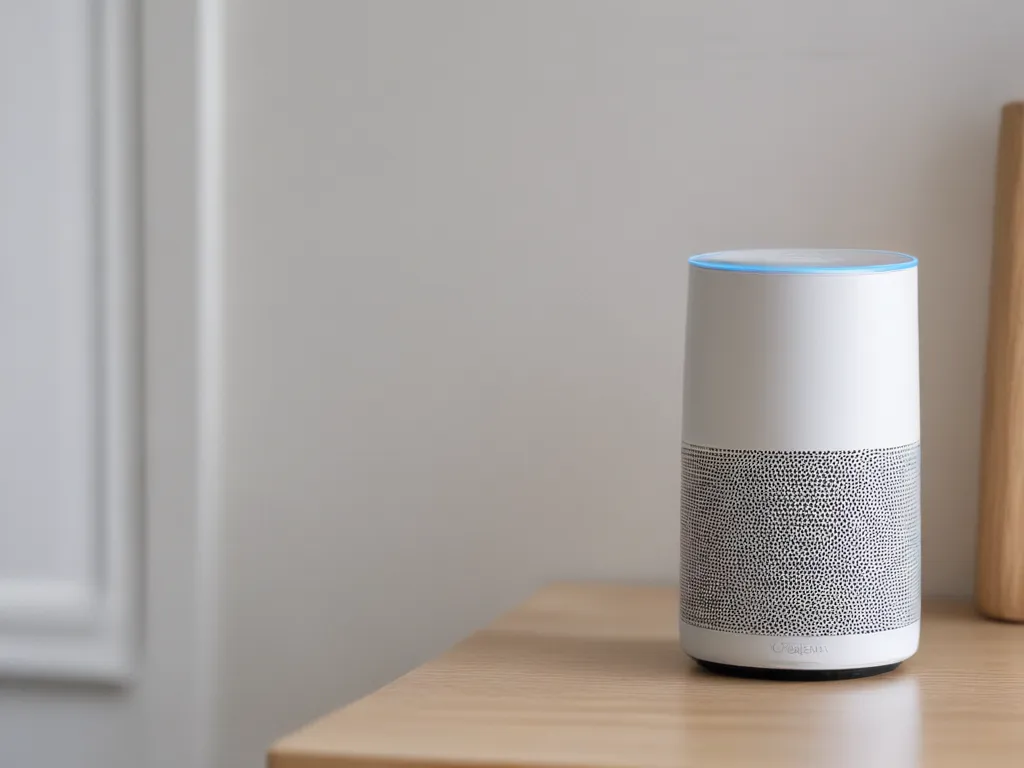Introduction
In our modern world, where technology continues to shape our lives, the concept of voice assistants has become increasingly prevalent. These intelligent virtual helpers, such as Amazon’s Alexa, Google Assistant, and Apple’s Siri, have made their way into our homes, promising to simplify everyday tasks with a simple voice command. However, one question that arises is whether these assistants can truly learn to clean properly – a task that requires a level of physical dexterity and cognitive reasoning that machines have yet to fully master.
The Rise of Voice Assistants
Voice assistants – have become a ubiquitous presence in modern households. These virtual helpers – are designed to assist with a wide range of tasks, from setting reminders and playing music to controlling smart home devices and providing information. The convenience they offer – has made them a popular choice for users seeking to streamline their daily routines.
According to a report by Juniper Research, the global market for voice assistants – is expected to reach $11.8 billion by 2023, with consumer adoption rates – continuing to rise. This growth – highlights the increasing demand for smart home solutions and the desire for seamless, hands-free interactions with technology.
The Challenge of Cleaning
Cleaning, however, – presents a unique set of challenges for voice assistants. While they – can provide instructions or reminders for cleaning tasks, the actual act of cleaning – requires physical manipulation of objects, dexterity, and an understanding of the environment that transcends simple voice commands.
To effectively clean a space, a voice assistant – would need to possess the following capabilities:
-
Object and Surface Recognition: The ability to identify and differentiate between various objects, surfaces, and materials – is crucial for determining the appropriate cleaning methods and tools.
-
Dexterity and Manipulation: Cleaning often involves intricate movements, such as reaching into tight spaces, scrubbing, wiping, and maneuvering cleaning tools effectively. This – requires a level of physical dexterity that current voice assistants – lack.
-
Cognitive Reasoning: Effective cleaning – involves understanding the context of a space, recognizing patterns of dirt or clutter, and making informed decisions about how to tackle specific cleaning tasks. Voice assistants – would need to possess advanced cognitive reasoning capabilities to make these judgments.
-
Adaptability: Cleaning environments – can vary significantly, from cluttered homes to structured office spaces. Voice assistants – would need to adapt to these changing environments and adjust their cleaning strategies accordingly.
Integrating Voice Assistants with Robotic Cleaners
One potential solution to this challenge – lies in the integration of voice assistants with robotic cleaning devices. Companies like iRobot, the maker of the Roomba robotic vacuum cleaner, have already begun exploring this approach.
The Roomba i7+ – is designed to work in tandem with voice assistants like Alexa, allowing users to issue voice commands for cleaning tasks. However, the Roomba’s capabilities – are still limited to vacuuming floors, and it lacks the dexterity and cognitive reasoning required for more complex cleaning tasks.
Advancements in AI and Robotics
To truly achieve a level of cleaning proficiency comparable to human standards, voice assistants – would need to be coupled with advanced robotic systems that incorporate machine learning, computer vision, and sophisticated manipulators.
Researchers – are exploring the development of robotic arms and manipulators capable of performing intricate cleaning tasks, such as wiping surfaces, scrubbing, and handling cleaning tools. These systems – would need to be integrated with voice assistants, enabling seamless communication and control through voice commands.
Additionally, advancements in computer vision and machine learning – could enable these robotic cleaning systems to identify and classify different types of surfaces, materials, and cleaning scenarios, allowing them to adapt their cleaning strategies accordingly.
Challenges and Limitations
Despite the potential of integrating voice assistants with robotic cleaning systems, several significant challenges – remain:
-
Cost and Accessibility: Developing advanced robotic cleaning systems – would likely be expensive, potentially limiting their accessibility to a broader consumer market.
-
Safety Concerns: Introducing robotic cleaning systems into homes – raises safety concerns, particularly around the interaction between robots and humans or pets.
-
Privacy and Security: Voice assistants – are often criticized for their potential to compromise user privacy and security. Integrating them with robotic cleaning systems – could exacerbate these concerns.
-
Human Supervision and Intervention: While voice assistants and robotic cleaning systems – may automate certain tasks, human supervision and intervention – may still be required for complex cleaning scenarios or to address unexpected situations.
Conclusion
While the integration of voice assistants with robotic cleaning systems – holds promise, the reality of voice assistants truly learning to clean properly – remains a significant challenge. Current limitations in physical dexterity, cognitive reasoning, and adaptability – make it difficult for voice assistants alone to replicate the level of cleaning proficiency achieved by humans.
However, as technology continues to advance, particularly in the fields of AI, robotics, and computer vision, the possibility of voice assistants becoming more capable in cleaning tasks – cannot be dismissed. With continued research and development, we may one day see voice assistants seamlessly coordinating with robotic cleaning systems, allowing for more efficient and automated cleaning experiences in our homes and workplaces.
Until then, it – is crucial to approach the capabilities of voice assistants with realistic expectations and to recognize that human involvement and oversight – may still be necessary for achieving truly comprehensive and effective cleaning results.







